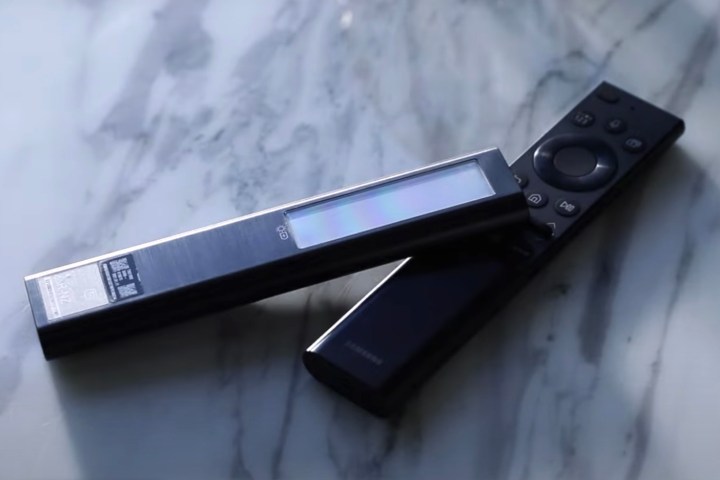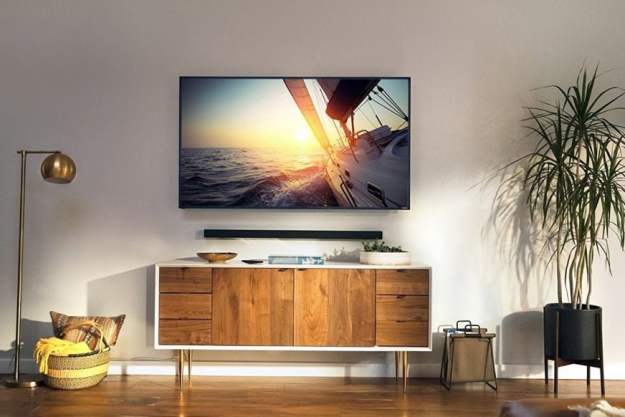For years now, Sony and Samsung have been two of the fiercest competitors in the world of TVs. Each manufacturer prioritizes all the integral elements that go into a world-class display, including resolution, backlighting, picture upscaling, and the smart TV experience. Both brands also produce TVs in many different sizes, ranging from 32-inch sets that are great for bedrooms to monolithic 85-inch-plus models that might be a squeeze for even the biggest living rooms.
Sony and Samsung TVs have a lot in common, but there are also a few key areas where these TV titans differ. This is why we’ve compared both brands to help you decide which is best for you.
Design
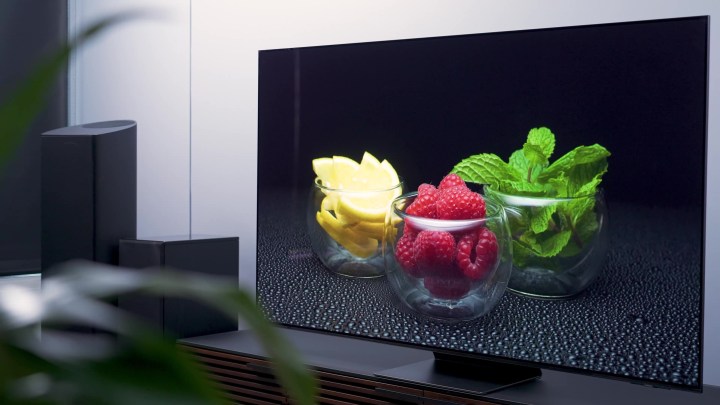
Both Sony and Samsung make some of the best-looking TVs, even before you start considering picture quality. Whether you’re going tabletop or wall-mounted, razor-thin bezels and incredibly small depth measurements are shared between Sony and Samsung — although the latter goes a bit more gung-ho in that regard.
Take the Samsung S95C OLED, for example: As the company’s flagship model, the S95C is part of Samsung’s Infinity One Design, eliminating the perimeter bezel around the screen for an enhanced, distraction-free viewing experience. And without the stand, the 65-inch version of this TV is only 0.4 inches from front to back! You won’t find any HDMI ports on the S95C either because they’re all housed in the separate slim One Connect Box.
Sony TVs are pretty thin, too, though. The flagship 65-inch XR A95L QD-OLED is only 1-3/8 inches without the stand. Razor-thin bezels complement the screen, and unlike the centered S95C stand, the A95L comes with two feet that attach to either side of the set. This allows the bottom of the A95L to be suspended mere centimeters from the top of your TV stand.
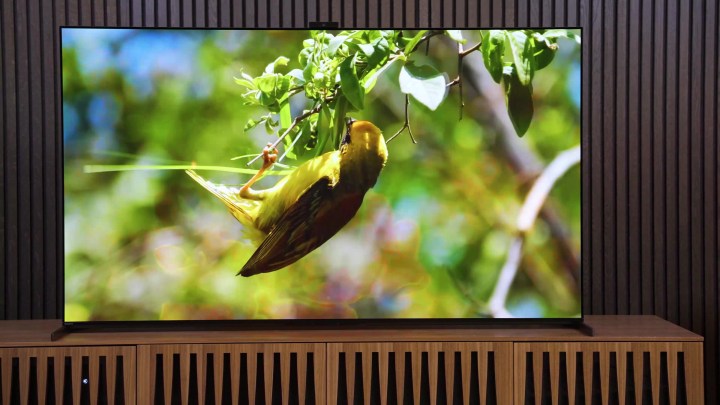
Chassis-wise, Sony and Samsung tend to favor industrial grays and matte-black shell colors. For models without Samsung’s Slim One Connect, you’ll find HDMI ports and other connections on the back and sides of Sony and Samsung sets (depending on the model).
Generally speaking, Sony sets are a bit bulkier than Samsung’s TV lineup. Do keep in mind, though, that as you start looking at mid-range and entry-level models from both brands, bezel size and overall depth tend to increase.
Display

When it comes to resolution, Samsung and Sony’s TVs have got you covered. Both companies produce 4K and 8K models, along with some 1080p and 720p options (mostly smaller sizes). While 4K tends to be the average TV pixel count these days, it doesn’t hurt to invest in an 8K set — although your options for 8K content are still rather limited.
As far as actual panels and lighting goes, Sony and Samsung produce a few different types of sets. On the bottom rung, both brands make traditional LED-LCDs with either edge-lit or full-array backlighting. In the midrange and premium tiers, you’ll find QLEDs, LED-LCDs, QLEDs with mini-LED lighting, and QD-OLEDs.
Sony and Samsung’s more advanced LED and QLED models utilize features like local dimming to control the backlighting of these sets more effectively. This all but eliminates light blooming and haloing during darker scenes while delivering improved contrast levels overall.
Models like the Sony XR X93L and the Samsung QN90C are also some of the brightest TVs on the market, which bodes well for those of us watching movies and shows in brightly-lit rooms.
QD-OLEDs are currently only made by Sony and Samsung, and this newer TV tech is only in its second generation. Combining self-emissive OLED pixels with quantum dots for enhanced colors, bright brights, and pure blacks, models like the Samsung S95C and Sony A95L are some of the best TVs money can buy.
Colors, upscaling, and motion
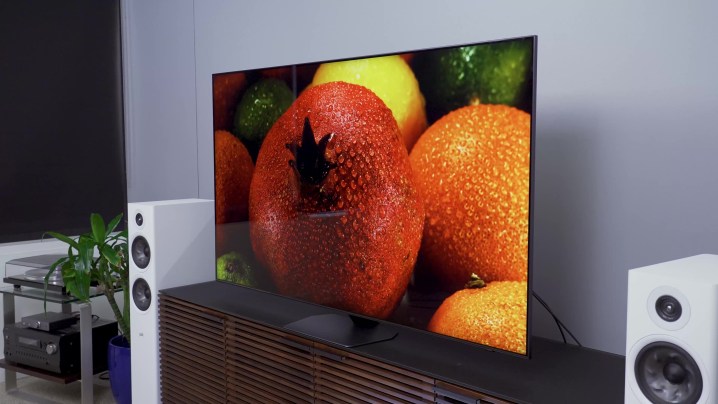
Samsung’s Neural Quantum Processor and Sony’s Cognitive Processor XR are the picture engines responsible for frame-by-frame optimization. Whether you’re watching a brand-new Ultra HD movie or old home videos, Samsung and Sony TVs are designed to deliver as much color and detail as possible.
HDR performance is just as integral as a solid picture engine, though. Fortunately, Sony and Samsung TVs are class-leading when it comes to HDR decoding. Both brands support popular formats like HDR10, Dolby Vision, and HLG. Samsung TVs do have a leg-up when it comes to HDR10+ support, though, as Sony TVs do not.
Sony and Samsung are also terrific at 4K and 8K upscaling. Even if you’re watching an ancient DVD, both brands use AI-driven upscaling tools to make even the grandest lo-fi images look more like Ultra HD.
For the most part, Sony and Samsung refresh rates are capped at 120Hz native, but we’re starting to see models capable of 144Hz (for compatible PC connections). If you’re a big sports fan or you love playing video games, features like Samsung’s Motion Xcelerator add an extra digital boost to that 120Hz baseline.
Certain midrange models and most entry-level Sony and Samsung sets are capped at 60Hz.
Sound quality
There’s no hiding that most TVs aren’t very good at delivering pulse-pounding audio. That being said, Sony and Samsung TVs have some pretty genius sound optimizations.
Both brands support several different audio codecs, including surround virtualization formats like Dolby Atmos and DTS:X. Then there’s Sony’s Acoustic Surface Audio+, a feature you’ll find on some of the company’s high-end models. With actuators behind the panel, this tech allows compatible Sony TVs to produce sound from the center of the screen. That’s on top of two built-in subwoofers.
If you’re the kind of person who always needs a separate audio system to go with your TV (we get it!), certain Samsung TVs include a feature called Q-Symphony. This allows the TV speakers to work in unison with compatible Samsung soundbars to deliver an immense soundstage for your movies, shows, and games.
Smart TV and user interface
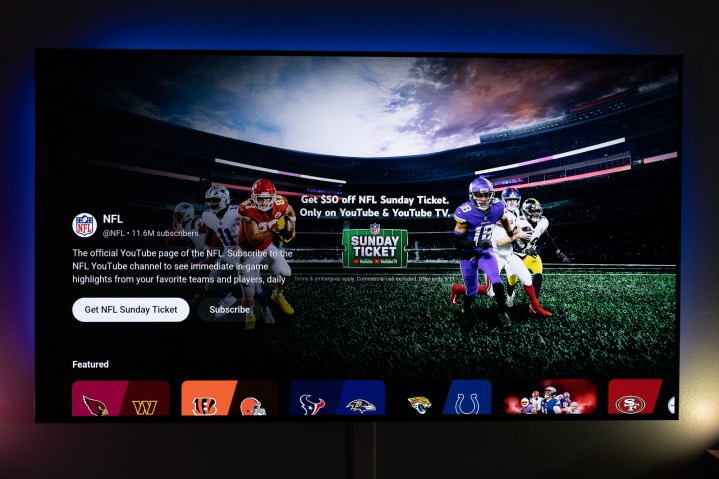
Behind the scenes (and all the picture and sound processing tools), Sony and Samsung TVs have easy-to-navigate user interfaces and smart TV platforms.
For Sony, the OS of choice is usually Google TV, although you’ll still find a couple of models that use Android TV instead. Over in Samsung Land, the Tizen OS runs the show.
If you spend a lot of time streaming movies and shows from apps like Netflix, Disney+, and Amazon Prime Video, Google TV offers one of the most intuitive Home Screen experiences. By keeping tabs on your viewing habits, Google TV will recommend content to you. You’ll also be able to take advantage of Chromecast for beaming media from your smartphone or tablet to your TV.
Many Google TV-powered Sony have Google Assistant built in too. Not only will you be able to use the digital companion to search for movies and control your smart home equipment, but you can also see live views from your Google Nest security cams on your TV!
Samsung’s Tizen may not deliver movie and show recommendations, but the OS supports an immense app library, screen sharing between compatible devices, and voice assistant support for Samsung’s Bixby, Amazon Alexa, and Google Assistant.
Additionally, several Sony and Samsung TVs support Apple AirPlay 2 and Apple HomeKit.
Gaming

Video games are everywhere, so ensuring your TV can handle everything a next-gen console or souped-up gaming PC can throw at it is important. Luckily, Sony and Samsung TVs include a number of gaming optimizations and picture presets.
The HDMI 2.1 standard is one of the best ways to ensure your TV will give you solid gaming performance. Faster refresh rates, less input lag, and better bandwidth are just a few of HDMI 2.1’s laurels, and, luckily, several Sony and Samsung sets include HDMI 2.1 inputs.
Many Samsung TVs include a built-in Game Bar. Think of this as a dashboard for all your gameplay and picture settings, allowing you to adjust features like HDR and Variable Refresh Rate (VRR) in a pinch. That’s on top of an automatic Game Mode that is activated whenever you turn on a next-gen console.
With Xbox Game Pass Ultimate, you’ll also be able to play Xbox games on your Samsung TV, without even having the system connected!
If you’re the proud owner of a PlayStation 5, pairing your console with a Sony TV is one of the best things you’ll ever do. Thanks to features like Auto HDR Tone Mapping, an automatic Game Mode, and PS Remote Play support, your PS5 gameplay will look and feel near-perfect.
You’ll also find other gaming optimizations, such as AMD FreeSync and Nvidia G-Sync, supported by both Sony and Samsung TVs.
Remote control
This category can be difficult to judge based on whether or not you like your TV remotes to have a lot of buttons or very few. Samsung remotes tend to represent the latter.
Most mid- and top-tier Samsung TVs come packaged with a sleek-looking Bluetooth remote that handles all the essentials, including volume controls, channel up/down, power, and a home button that fires up the smart TV menu. If you’re into loading apps up with voice commands, there’s even a built-in mic for doing so.
Certain Samsung TVs now come with SolarCell remotes. When placed in a well-lit environment with the solar panel facing up, the SolarCell re-ups your remote battery. You can also charge SolarCell remotes with a USB-C cable.
While minimalist and comfortable to pick up, one thing we’ve noticed with this lineup of remotes is that the Bluetooth can get a little wonky occasionally, resulting in an “un-paired” remote (especially when the battery level is low). Fortunately, re-pairing is as simple as holding a few buttons down, but we thought we’d mention this little inconvenience.
Sony remotes are certainly more button-packed. On mid- and top-tier models, you’ll find pretty much anything you would expect from a modern TV remote, including numbers, volume controls, a home button for smart TV functions, jump-to-app buttons like Netflix and YouTube, and a mic button for voice commands. Sony remotes also have a more traditional TV remote appearance compared to Samsung’s more futuristic design.
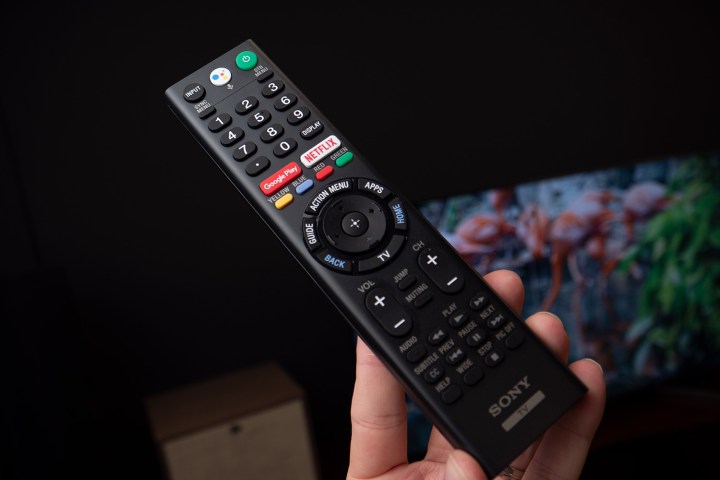
The one minor bummer for both brands: no backlighting. It’s never fun to pick at buttons in the dark, and neither Samsung nor Sony has a button on their remotes for illuminating buttons.
Of course, there’s a battlefield of the best TV brands to choose from, but hopefully, you’ve learned enough about some of the strengths and weaknesses of both Samsung and Sony TVs to make a more informed choice.
Editors' Recommendations
- Best Walmart TV deals: 43-inch 4K TV for $195 and more
- Best 85-inch TV deals: Save on Samsung, Sony, TCL, and more
- Hulu with Live TV: plans, price, channels, bundles and more
- Best 75-inch TV deals: Get a big screen from $500
- LG TV deals: Get a 70-inch 4K TV for under $650


